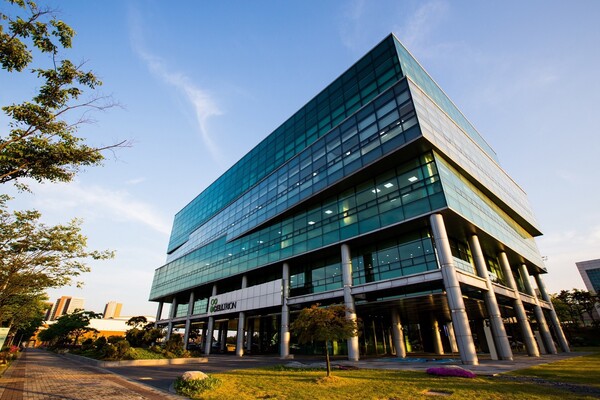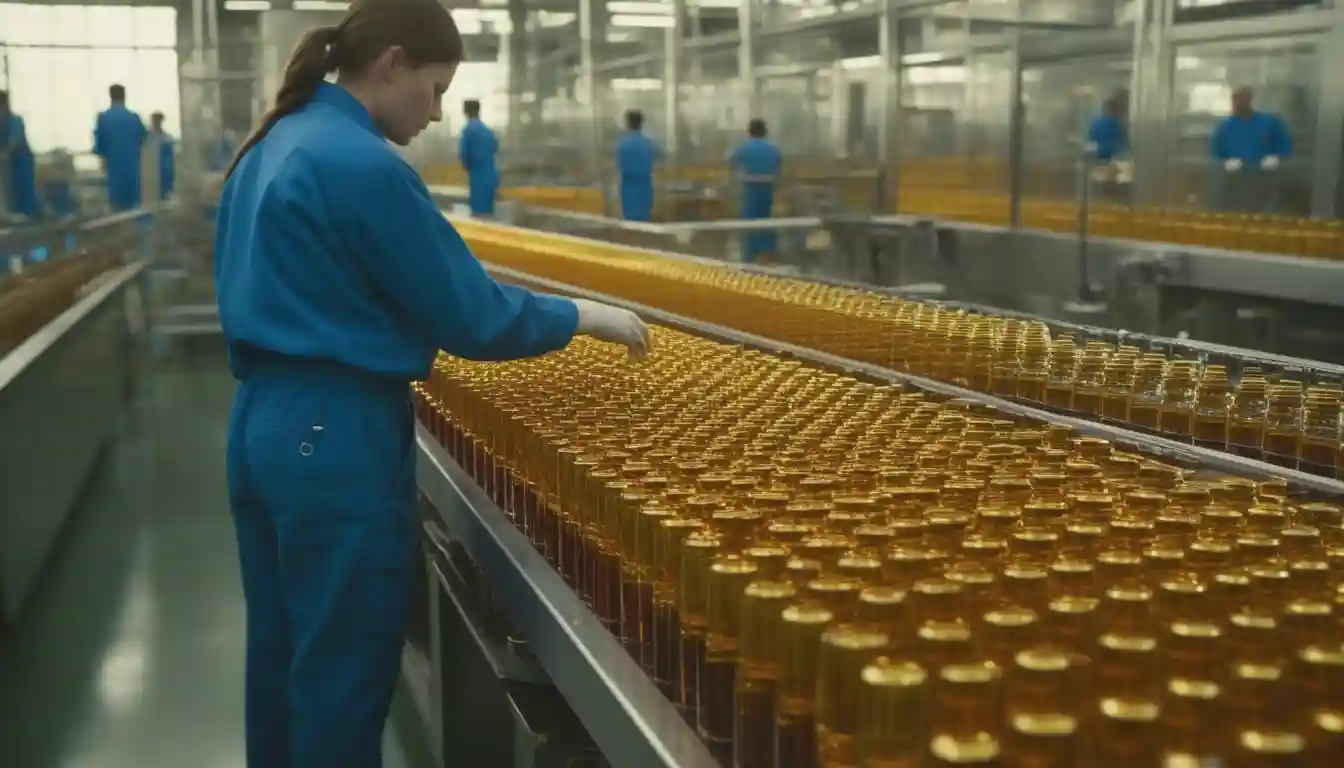South Korea’s Celltrion Puts $330M on the Line in U.S. Manufacturing Push
Buying Eli Lilly’s New Jersey plant marks a major step in the global pharma race to localize production.
Celltrion is making a bold play in the United States. The South Korean biotech giant announced it will buy Eli Lilly’s Branchburg, New Jersey, biopharmaceutical plant for about $330 million, a move that signals more than just an expansion—it’s a strategic gamble that could reshape its presence in the American market.
The deal, set to close by year’s end, runs through Celltrion’s U.S. subsidiary and comes with a much larger commitment: at least $1 billion when future expansions and operating costs are factored in. Executives say the purchase will give them a true “one-stop production-to-sales system” on American soil.
From Risky Imports to Local Muscle
For years, drugmakers have worried that tariffs on pharmaceutical imports might squeeze their margins. By buying a plant that already has FDA approval, Celltrion sidesteps that risk and gains control of its own supply chain in the world’s biggest drug market.
“This eliminates tariff concerns and secures a complete local pipeline from manufacturing to sales,” a company representative said, underlining the urgency of ramping up operations.

The Branchburg site covers 37 acres, with four main buildings and room for expansion. Once fully upgraded, the plant could pump out 1.5 times the capacity of Celltrion’s massive Songdo facility in South Korea.
A Strategic Edge in Biosimilars
Biosimilars are biological products highly similar to an FDA-approved reference biologic, sharing the same mechanism of action and intended uses. They undergo a rigorous approval process to ensure no clinically meaningful differences in safety, purity, and potency, distinguishing them from generic drugs which are identical chemical copies.
Celltrion isn’t just buying insurance against tariffs—it’s seizing an opportunity to outpace rivals in the crowded biosimilar market. Rather than building from scratch, the company will inherit an FDA-compliant facility along with its trained workforce. That means no costly delays in hiring and training, a common stumbling block for greenfield projects.
There’s also an immediate revenue cushion. As part of the deal, Celltrion will continue supplying raw materials to Lilly under a contract manufacturing arrangement. That gives the plant cash flow from day one while Celltrion works on bringing its own products into production.
New Jersey’s deep talent pool in biotechnology adds another advantage. Analysts say access to seasoned professionals in the state could fast-track Celltrion’s U.S. expansion.
Clearing Regulatory Hurdles
Of course, a plant’s history matters. While Branchburg comes with FDA approval, it has faced scrutiny in past inspections. Transitioning ownership smoothly means Celltrion must double down on quality and compliance.
Industry experts caution that new owners typically spend a year or more validating processes and ensuring the facility meets regulatory standards before new products roll out. As one analyst put it: “The biggest swing factor in the next two years is quality assurance. If Celltrion nails FDA compliance, the asset becomes far more valuable.”
Why Lilly Walked Away
Lilly’s decision to sell isn’t unusual. The company has been reshaping its manufacturing footprint, investing in newer sites that better fit its booming obesity and diabetes drug franchises. Selling an older facility frees up capital for those fast-growing product lines.
The booming global market for obesity drugs, a key driver of Eli Lilly's strategic shift in manufacturing.
| Year | Market Category | Projected Market Size (USD Billion) | Source |
|---|---|---|---|
| 2024 | GLP-1 Receptor Agonist Market | 53.46 | Grand View Research |
| 2030 | Global Obesity Drug Market | 105 | Morgan Stanley |
| 2030 | Global Obesity Drug Market | 95 | Goldman Sachs |
| 2030 | Global Obesity Drug Market | 200 | UBS Global |
| 2030 | GLP-1 Receptor Agonist Market | 156.71 | Grand View Research |
| 2033 | GLP-1 Receptor Agonist Market | 168 | GlobalData |
This kind of portfolio pruning has become common across the industry. Big pharma firms are unloading legacy plants so they can focus resources on next-generation therapies and more advanced production platforms.
Positioning for the Future
For Celltrion, the payoff could be big. U.S. hospitals and insurers increasingly look for suppliers with domestic manufacturing because local plants mean lower logistics costs and fewer supply disruptions. That could help Celltrion sharpen its pricing edge against entrenched players like Amgen, Sandoz, and Pfizer’s Hospira.
Growth of the U.S. biosimilar market, highlighting the opportunity Celltrion is targeting with its domestic manufacturing push.
| Year | U.S. Biosimilar Market Size (USD Billion) | U.S. Biosimilar Savings (USD Billion) |
|---|---|---|
| 2014-2020 | - | 11.2 (Cumulative Historical) |
| 2021 | 6.73 | - |
| 2022 | 9.48 | - |
| 2023 | - | 12.4 (Annual) |
| Up to 2023 | - | 36.0 (Cumulative since introduction) |
| 2024 | 30.54 | - |
| 2025 (Forecast) | 22.59 | 38.4 (Projected Cumulative 2021-2025) |
| 2029 (Forecast) | 100.75 | - |
| 2034 (Forecast) | 93.52 | 54.0 (Projected Cumulative 2017-2026) |
The company already sells a wide range of biosimilars in the U.S.—including infliximab, rituximab, trastuzumab, and adalimumab. Once Branchburg clears validation, these products could shift to local production, boosting capacity and cutting delivery times.
Looking Ahead
Analysts see the deal as a bet on several converging trends: potential U.S. import tariffs, pressure to secure supply chains, and surging demand for biologics manufacturing capacity. Celltrion plans to invest in phases, starting with about $700 million for the acquisition and operations, and later expanding as market demand grows.
The risks are real. Any slip in FDA compliance or delays in validation could derail the timeline and weigh on returns. But if Celltrion executes well, the payoff could come faster than expected, with revenue streams strengthening long before full expansion is complete.
For now, all eyes are on the key milestones—deal closure, FDA inspections, first product approvals, and decisions on expansion capital. Each step will reveal whether Celltrion’s billion-dollar wager pays off in America’s rapidly shifting pharmaceutical landscape.
House Investment Thesis
| Category | Details |
|---|---|
| Deal Basics | Parties: Celltrion's U.S. subsidiary buying ImClone Systems LLC (Lilly's Branchburg, NJ site). Price: $330M purchase; initial spend ~₩700B; total investment ≥₩1.4T with expansion. Close Target: By end of 2025 (subject to approvals). |
| Asset Description | Site: ~37 acres, 4 buildings, ~10 acres vacant for expansion. Scale: Large stainless-steel bioreactor trains (e.g., 3x10kL), ~45,000 pyeong footprint with room for brownfield expansion. Status: FDA-approved, cGMP-seasoned. Regulatory History: FDA observations (483s) from 2019-2024; whistleblower litigation. |
| Strategic Rationale | 1. Tariff Hedging: Insurance against potential U.S. pharma import tariffs (up to 150-250%). 2. Speed: 12-18 months to validate vs. 4-6 years for a greenfield site. 3. Immediate Utilization: Inherited CMO contract with Lilly (~50% capacity for ~5 years) provides cash flow. 4. Lilly's Motive: Divesting a legacy site to focus on next-gen capacity. |
| Strategic Fit for Celltrion | Portfolio: Localizes DS for existing broad U.S. biosimilar portfolio and Zymfentra. Competitiveness: Achieves U.S. cost parity, improves tender flexibility, trims logistics/CMO costs. Optionality: Hybrid model for own SKUs + selective CDMO in a tight U.S. capacity market. |
| Pros | - Tariff immunity & positive political optics. - Faster, cheaper than greenfield. - Immediate cash flow from inherited CMO work. - Labor continuity with full employment succession. |
| Cons / Risks | - Quality Debt: Site's FDA history raises risk of early, stringent inspections; any 483/Warning Letter would delay thesis. - Validation Clock: 12-18 months to produce Celltrion SKUs; slippage pushes revenue to 2027. - Capex Creep: Expansion costs ≥₩1.4T could overrun. - Execution Overload: Heavy lift for QA culture reset, system harmonization, and data integrity. |
| Base-Case Economics | Investment: ~₩700B initial; ≥₩1.4T total over 3-4 years. Path: 2026-27: ~50% CMO + Celltrion PPQ -> 2027: Initial commercial DS lots. Margins: CMO contracts: high-teens to mid-20s EBIT; own SKUs: meaningfully higher. Payback: 5-7 years on initial ₩700B if QA successful; 7-9 years with slippage. |
| Execution Playbook (Author's) | 1. Immediate QA "Red Team": Mock inspection, data integrity forensics. 2. Parallel Tech-Transfer: Prioritize 2 high-volume molecules. 3. Talent Retention: Packages for key Lilly veterans tied to audit milestones. 4. Phased Capex: Utilities/cleanrooms first; defer non-critical work. 5. Stakeholder Diplomacy: Early engagement with FDA, state, and community. |
| Probabilities (Author's View) | - Close by Dec-2025: 80% - First Commercial Lots by 2H-2026: 60% - No Major FDA Enforcement through 2026: 55% - Phase-1 Expansion Decision within 9-12 months post-close: 65% - CMO ≥10-15% throughput beyond 2027: 60% |
| Investment Thesis & Cases | Thesis: Transition from "exporter" to "U.S. local player" to de-risk tariffs and lower unit costs. Bull Case: Clean inspection, faster PPQ, tariff policy rewarding U.S.-made products. Bear Case: QA stumble, tariff policy that raises input costs, dull U.S. formulary dynamics. |
| Final Take (Author's) | Celltrion is buying speed, tariff cover, and U.S. credibility at a fair price. Success hinges entirely on treating QA/Compliance as the core product. Over-investing in quality for 12-18 months makes Branchburg a durable beachhead. Under-investing turns it into an expensive fix-up. |
NOT INVESTMENT ADVICE
